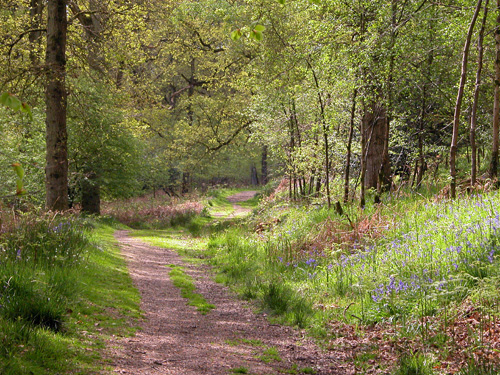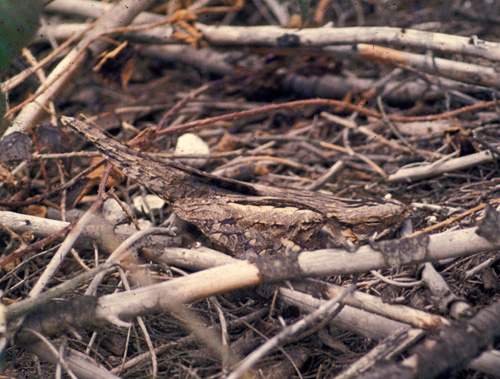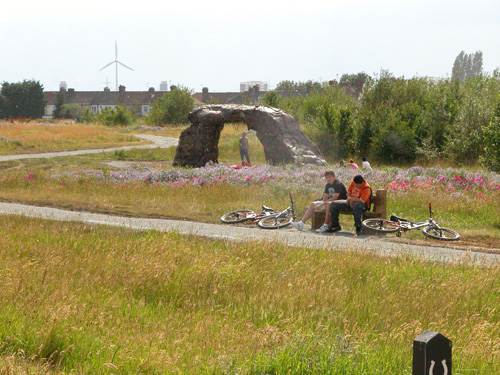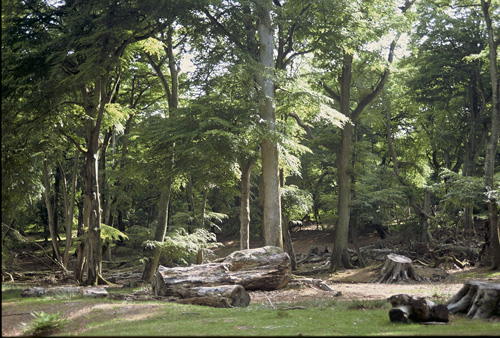by Roderick Leslie
Its official. On 31st January 2013 Government confirmed what we all knew and believed: the nationally owned forests of the Forestry Commission are one of the icons of English culture.
They stand alongside St Paul’s Cathedral, Shakespeare, the National Trust and Manchester United as one of those things that define who we are and how we see our country. That the Forestry Commission is modest and self effacing only makes a closer fit with our national character.
A wild claim ? Well, lets take it apart. For starters there’s growing evidence that there’s a divide between the urban-focussed establishment and the much greater value ordinary people place on their green spaces, from the Lake District to their local park or forest. Then look at the places: diamond in the national crown is the New Forest, the most perfect surviving medieval forest left in Western Europe, from its expansive heathlands to its atmospheric pasture woodlands. But most important of all are its complex traditions, its unique surviving commoning culture. Preserved against all the odds amongst some of the most intense urban pressures in Europe, over 10 million of us enjoy these wonderful open spaces every year and in every different sort of way.
If anything the passion of the forest community is even greater in the Forest of Dean. Stripped of its timber trees by private enterprise in the 18th century, a seething cauldron of the industrial revolution in the 19th, Nelson’s Oaks hide the scars today as families cycle the iron workers railways and picnic on the Beechenhurst pithead.

Nagshead Nature Reserve in the heart of Nelson’s ancient Oaks in the Forest of Dean’s Cannop Valley – home of Pied Flycatcher, Wood Warblers and Redstarts
Evolving from their utilitarian origins, the newer forests have already developed their own character under imaginative management: Thetford, Dalby, Grizedale are all popular names on people’s holiday maps. Visitors can mountain bike one day, walk an art trail or watch wildlife the next and there’s an increasing range of courses on offer to open the doors to a woodland culture – make a chair, send the kids to forest school or join a ranger led walk to hunt bats and badgers in the dusk.

A finely camouflaged Nightjar broods its newly hatched young in Cropton Forest, North Yorkshire in 1981. It blends perfectly with the dead branches on the new clearfell – unlike its carelessly discarded white eggshell nearby !
I’ve personally followed the fortunes of an enigmatic bird, the nocturnal Nightjar, little known and declining when I studied it in Yorkshire in the early 1980s. Boosted by its love of the new clearfells as FC forests matured, its increased dramatically and along the way led to a new 18,000 hectare European Special Protection area over most of Thetford Forest. The locally based British Trust for Ornithology has now tracked Thetford-born Nightjars to their equatorial African wintering grounds and back with stunning new microchip technology.
But, most of all, these forests are about completely open access: a policy that has led to a real and unique feeling of ownership for this very special slice of our English landscape. In a culture of militant private ownership going back to the enclosures of the 18th century, the debate over forest sales is the point where as a society we said ‘this is the limit – this is the common ground – this is where we do share our space, the countryside which is such an important part of England, together.’
This is a story that has only just started: less than 100 years, nothing in the life of a forest. In recent years there has been a growing emphasis on woods close to people, smaller woods, sometimes neglected when timber production was the main aim. These are the woods people use on a daily basis, in their millions. The pioneering play trail at Moors Valley attracted 800,000 visitors a year from the day it opened. 20 years on we now know its just what we need, not just for fun, but for getting kids out and active.

20 years of active kids – the ‘Snake Pit’ at Moors Valley in 1990 – since then millions of chidren have thrilled to the active outdoors
The Forestry Commission has actually removed some facilities – waymarked walks, toilets from its small local woods – but it did it because local people know their favourite dog walking or jogging routes – they were far more interested in the Commission’s plans and that is where the most important element comes in: the forest communities, the real people who value their real Forestry Commission forests and rose up in their defence. Probably the Forestry Commission’s biggest triumph is the way it connected with the forest users after the debacles of the late 1980s.
Over 20 years it has painstakingly rebuilt the lost trust, largely out of the limelight, talking to the people who live in and visit the forests, listening, responding, explaining and genuinely changing the way it looks after the forests. An approach that to be honest has caused considerable confusion throughout the events of the last 2 years: the ‘establishment’, including not just politicians but also the NGOs who have come to see it as their right to tell us what to think have struggled to cope with real people with real, often well educated opinions and with quite different views.

HOOF (Hands off our Forest) protestors mass on New Years Day 2011 to stand up for public ownership of our public forests – now confirmed by Secretary of State Owen Patterson in the Government’s response to the Independent Panel on Forestry
Understanding that and developing it into a new way of working is just one of the contributions the Forestry Commission is making to a positive and imaginative future. Using its vast estate combined with its exceptional ability to deliver landscape scale solutions, the Forestry Commission is already pioneering new directions, picked up by the panel and in the Government’s response: can trees play a role in landscape rather than concrete based flood mitigation ?
There’s one FC and the Environment Agency prepared earlier, in a groundbreaking river restoration project in the New Forest – and its effect in slowing the flow is dramatic. Its just part of FC’s growing list of re-modelled landscapes, from habitat restoration in the New Forest, to the wilds of Ennerdale, in partnership with the National Trust, to Neroche in Somerset where a failing forest has been given a new life and new direction for the woods, for wildlife and for local communities.

Forestry Commission ecologist Simon Weymouth tames the flood in the New Forest as river restoration and forest trees slow peak flows
Now the challenge is to bring the woods to people, to their doorsteps around and into our towns and cities. FC’s pioneering work in places like the Thames Gateway and the North West is there, right now, showing what it means to end our cities with beautiful, accessible wildlife rich green space, not the landfills, breakers yards and slag heaps of the past.

Once a landfill, Ingrebourne Hill is a fantastic new environment on the very edge of East London – a beacon for how we could develop new ways for our cities to meet the countryside
Its about much more than new trees: there should be a whole range of habitats through reedbeds, wet meadows to heathland and there should be a whole range of purposes: access, new non-car travel routes, activities for kids and adults, wildlife, water management, green energy and it should all be beautiful new landscape. Because forestry became a big political issue we now realise just how it could improve the lives of millions of people. That for me is the ambition and challenge. That is the woodland culture we should be seeking.
Roderick Leslie
Click here to read more articles by Rod Leslie



























